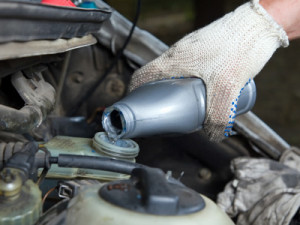While some may think an old school “flush” will resurrect a braking system, Chuck Kennedy, technical trainer at Bendix Brakes, says if one is executed without checking for contaminants already present, the braking system’s hydraulic control unit (HCU) can be seriously harmed. That’s why maintaining clean, contaminant-free brake fluid is just as imperative to a vehicle as getting regular oil changes.
“Contaminated brake fluid is one of the top reasons for hydraulic control unit failure in today’s brake systems. It’s extremely important to remove old fluid from the reservoir and clean the reservoir itself before adding fresh fluid. This keeps contamination from spreading to sensitive areas,” Kennedy said. “A flush takes what’s already in the master cylinder reservoir – including any sediment or solid particulates – and pushes it through the hydraulic control unit before going out of the calipers and wheel cylinders. Inlet solenoid screens will trap particles that haven’t been removed, and if a wheel circuit is plugged, it will usually need to be replaced.”
As technicians already know, it’s expensive to replace hydraulic brake components, and repairs can be easily avoided by just making a quick visual check for sediment and solid deposits.
Technicians may also want to consider using test strips as well as electronic moisture testers. If test strips are used, they should be kept tightly sealed to maintain accuracy. Electronic testers are more expensive, but also more accurate.
Once particles and other contaminants have been purged, fresh fluid can be bled through the rest of the system, or a full brake fluid change can be performed.
Kennedy advises that an HCU bleed function performed during a fluid change with a bi-directional scan tool will also insure that all fluid is changed, not just what’s in the main wheel circuit galleys.
Preventative maintenance goes a long way in keeping today’s complex braking systems fully operational, says Kennedy.
For more information, please visit: here